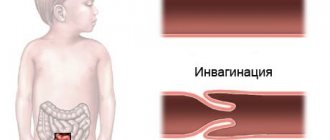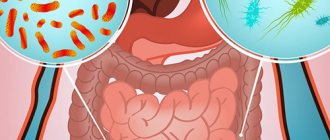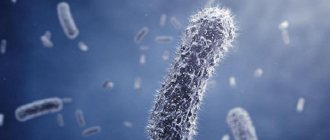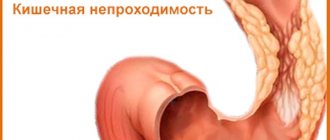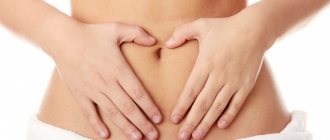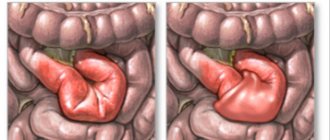The occurrence and treatment of lactose-negative Escherichia coli
- Concept and occurrence of E. coli
- Manifestation of the disease and methods of its treatment
Lactose-negative Escherichia coli is an opportunistic microorganism and is always found normally in the human intestines. That is, these are microorganisms that are not only not generally harmful to the health of the body, but are also in some way necessary in certain quantities. However, when negative conditions arise, these intestinal microorganisms begin to actively multiply, as a result of which, due to exceeding the norm, beneficial flora is suppressed and dysbiosis develops.
Concept and occurrence of E. coli
Escherichia coli is a gram-negative bacterium that belongs to the Enterobacteriaceae family and is rod-shaped. To develop, it does not need oxygen, but when it is supplied, it does not lose its viability. Lactose-negative enterobacteria have many strains, of which most belong to the natural microflora of the human intestine, helping to prevent the development of harmful microorganisms and the synthesis of vitamin K. At the same time, some varieties of E. coli can cause severe poisoning in people, colibacillosis and dysbacteriosis.
By nature, the microflora of people contains many microorganisms, which include lactose-negative enterobacteria, enterococci, streptococci and others. Such bacteria, in particular their strains, are in balance, but if it is disturbed, they begin to multiply vigorously, which leads to rotting, fermentation, and the development of dangerous diseases.
Some intestinal strains can provoke not only diseases of the gastrointestinal tract, but also the genitourinary system, in the form of cystitis, colpitis, meningitis in infants, prostatitis and sometimes peritonitis, pneumonia and sepsis.
The factors behind digestive disorders, the proliferation of pathogenic E. coli and dysbacteriosis can be different, but, as a rule, these are diseases of the digestive system. Also, very often, deviations from the norm of intestinal microflora are caused by the use of certain antibiotics, which have the ability to suppress microorganisms responsible for preventing the process of reproduction of pathogenic flora.
Lactose-negative bacillus can be transmitted from a sick person to a healthy person through the fecal-oral route. The development of the disease is facilitated by neglect of the rules of food preparation hygiene, consumption of unwashed foods, as well as consumption of not very well-fried meat and unboiled milk, because these products can come directly from carriers of Escherichia coli strains.
Return to contents
Manifestation of the disease and methods of its treatment
Escherich's bacillus can be pathogenic or non-pathogenic. The latter species is a necessary component of the intestinal microflora. The state of the human intestinal microflora is determined according to the biochemical analysis of stool. The norm, in addition to the content of all other representatives of the natural intestinal microflora, implies the content of E. coli in the feces. The following types of strains are distinguished:
- stick with normal fermentation;
- lactose-negative;
- hemolyzing.
In a normal state, tests should show the highest content of coli with normal fermentation - up to 10*8 CFU/g, and in general should not contain hemolytic E. coli. The content of lactose-negative species above 10*5 CFU/g is a deviation from the norm, indicating the onset of dysbiosis.
Symptoms of E. coli are a clear manifestation of intestinal dysbiosis, which can occur in both adults and children.
In addition to stool upset, vomiting, nausea, abdominal pain and bloating occur quite often. In addition, the smell of feces changes and bad breath occurs. Common symptoms of the disease include:
- weakness;
- fatigue;
- drowsiness;
- lack of appetite.
Depending on the causative agent of the disease and the cause that provoked the proliferation of pathogenic organisms, there are several main methods of treating E. coli. In some cases, correcting the diet is sufficient, but, as a rule, therapy involves taking antibiotics. Treatment with antibacterial medications often involves taking medications from the aminoglycoside group. For the effectiveness of treatment, it is useful for patients to culture the intestinal contents. If diarrhea occurs, the water-electrolyte balance should be restored by rehydration.
Advice from experienced pediatricians
- The first symptoms of E. coli in a baby - diarrhea, vomiting (regurgitation), fever, crying of the child, tucking in his legs - should be a signal to call a doctor.
- The first priority is to stop the diarrhea. Start feeding your child immediately after the second diarrhea.
- Pay great attention to personal hygiene, as well as the child, household items and premises.
- Take care of the health of your newborn, as strong immunity will defeat pathogenic E. coli even without external help.
The most important thing when treating E. coli is to prevent dehydration.
Causes of E. coli in infants and methods of treatment
A baby is born with a sterile intestinal tract and its colonization with – useful and not so – microflora begins from the moment the baby is born. Ideally, these should be lacto-. bifidobacteria and certain species of colibacteria. The latter belong to the group of opportunistic microflora and actively multiplying E. coli in an infant can provoke the development of coli infection.
There are several types of E. coli. Thus, pathogenic microorganisms that should not be in the intestines include hemolyzing Escherichia coli. Even a small amount of it causes severe intestinal upset in a child.
The second variety, lactose-negative Escherichia coli, is included in the category of opportunistic microflora and is present in a certain amount in the gastrointestinal microflora.
Reasons for the growth of E. coli in infants
The main route of transmission of the bacillus is fecal-oral. Hemolyzing E. coli can enter the child’s body, for example, through mother’s milk, or be acquired during a stay in the maternity ward.
The reasons for the proliferation of E. coli can be different, but most often it is a decrease in the baby’s immune defense. But infection can also be transmitted by a child’s hands, which he constantly puts in his mouth, a pacifier that has fallen to the floor, or a poorly disinfected bottle.
Symptoms of coli infection in infants
Active reproduction of E. coli causes the formation of an imbalance in the microflora of the gastrointestinal tract of the newborn. The baby becomes restless and sleeps poorly. As a rule, against the background of a qualitative redistribution of the bacterial composition of the intestine, the child develops colic - pain in the tummy, which is paroxysmal in nature, and always appears after feeding.
Symptoms of coli infection can be quite varied. And here are the most important ones:
- bloating and increased gas formation;
- rumbling in the intestines;
- disruption of the passage of food through the gastrointestinal tract causes active regurgitation and even vomiting;
- sometimes malabsorption syndrome is diagnosed (impaired absorption of nutrients by the surface of the small intestine);
- diarrhea (stool becomes foamy and is accompanied by a putrid or sour odor);
- the baby begins to lose weight.
If the diarrhea is too severe, the baby becomes dehydrated. The symptoms of this condition are as follows:
- dry tongue and skin;
- rare urination;
- weakness;
- drowsiness;
- increase in general temperature (rare).
Diagnosis of coli infection
In order to make an accurate diagnosis and select adequate therapy, the baby is prescribed the following studies:
- testing stool for dysbacteriosis;
- scatology.
Routes of infection
If a pathogenic strain enters the body in large quantities, disaster is expected. Hemolyzing E. coli is especially dangerous in infants. In 99% of cases, it enters the intestines from the outside - through contaminated household items, food, hands. It’s not for nothing that intestinal infections are popularly called “the disease of dirty hands.”
Parents' inattention to the cleanliness of dishes, toys, sterilization of bottles, pacifiers, untimely cleaning of the house, unwashed vegetables, fruits and herbs from the market, meat, fish and seafood without proper heat treatment or in violation of storage technology, confectionery - all this can become a source infection.
Although sometimes even the most clean, tidy and responsible mothers and fathers can get an intestinal infection in an infant. The fact is that pathogenic hemolytic Escherichia coli is very highly contagious and any carrier (human or animal) can cause its spread, for example, through physical contact (a kiss, a half-eaten piece, sharing the same utensils). Poorly purified drinking water also poses a great danger.
A small amount of hemolytic E. coli entering the intestine is not dangerous for an adult healthy person - passing through the gastrointestinal tract, it will be mainly neutralized by gastric juice, as it dies in an acidic environment. But for a newborn child with an imperfect immune system, the situation can be very dangerous, including complications and death.
Other factors that can become a trigger for pathogenic bacteria: hypothermia, frequent colds, poor health, congenital pathologies.
E. coli begins to multiply uncontrollably in infants even when treated with antibiotics without concomitant intake of lacto- and bifidobacteria. Only a pediatrician can correctly calculate their doses taking into account the weight and age of the baby.
If a pathogenic strain enters the body in large quantities, disaster is expected. Hemolyzing E. coli is especially dangerous in infants. In 99% of cases, it enters the intestines from the outside - through contaminated household items, food, hands. It’s not for nothing that intestinal infections are popularly called “the disease of dirty hands.”
Parents' inattention to the cleanliness of dishes, toys, sterilization of bottles, pacifiers, untimely cleaning of the house, unwashed vegetables, fruits and herbs from the market, meat, fish and seafood without proper heat treatment or in violation of storage technology, confectionery products - all this can become a source infection.
Although sometimes even the most clean, tidy and responsible mothers and fathers can get an intestinal infection in an infant. The fact is that pathogenic hemolytic Escherichia coli is very highly contagious and any carrier (human or animal) can cause its spread, for example, through physical contact (a kiss, a half-eaten piece, sharing the same utensils). Poorly purified drinking water also poses a great danger.
A small amount of hemolytic E. coli entering the intestine is not dangerous for an adult healthy person - passing through the gastrointestinal tract, it will be mainly neutralized by gastric juice, as it dies in an acidic environment. But for a newborn child with an imperfect immune system, the situation can be very dangerous, including complications and death.
E. coli begins to multiply uncontrollably in infants even when treated with antibiotics without concomitant intake of lacto- and bifidobacteria. Only a pediatrician can correctly calculate their doses taking into account the weight and age of the baby.
Rules for deciphering test results for dysbacteriosis for adults and children
Clostridia
Clostridia take part in the digestion of proteins. At the same time, they synthesize indole and skatole, which in small concentrations stimulate intestinal motility, and in large concentrations cause severe poisoning. With an increase in the concentration of clostridia, the amount of indole and skatole increases accordingly, which entails the development of putrefactive dyspepsia.
The growth of clostridia colonies is influenced by the amount of protein in human food.
Candida
An increase in the number of representatives of yeast-like fungi of the genus Candida may be a consequence of taking antibiotics. When the vital activity of normal intestinal microflora is suppressed and the number of candida increases, the symptoms of candidiasis (thrush) clearly appear.
In children, candidiasis manifests itself as pain in the navel area, bloating, and loose stools. In some cases, the stool is foamy, mixed with mucus and blood.
Salmonella
Salmonella is a pathogenic microorganism that should not normally be present in the intestines. Its entry into the human body leads to the development of an infectious disease - salmonellosis.
Shigella
Shigella is a pathogenic microorganism that should not normally be present in the intestines. It causes the development of dysentery and manifests itself as acute toxic damage to the intestines. The main routes of transmission are contaminated dairy products and water, raw fruits and vegetables, and patients with dysentery.
Composition of intestinal microflora depending on the type of child’s nutrition (fumes/g)
The composition of the intestinal microflora strongly depends on the type of food the child eats. Breastfed babies are less susceptible to dysbacteriosis and intestinal infections.
Children whose diet was introduced to complementary foods in the form of nutritional mixtures have weaker microflora. Children whose feeding is entirely based on formula have the weakest microflora.
Dysbacteriosis can have serious consequences for a child's health. Therefore, it is very important to understand the reasons for its occurrence, know the basic rules of prevention and be able to correctly read the results of an analysis for dysbacteriosis.
Attention, TODAY only!
And our doctors usually don’t even prescribe a test. They simply advise you to take this or that medicine. My middle daughter sometimes has a bad tummy, I don’t even go to them anymore. the answer is always the same.
It seems to me that dysbiosis is generally a very scary diagnosis. They put it right and left on everyone who has something wrong with their stomach. How will it be okay with our food? And these same bifido bacteria are good for everyone to drink. So we swallow these drugs and correct the microflora.
Well, our doctors love to talk about this dysbiosis; they successfully find it in every child. I don’t know a single child around me who hasn’t been told about dysbak - mothers on the playground, relatives, and friends with their children have told me this. But among my foreign girlfriends, such a diagnosis does not sound at all. It seems that abroad there is no dysbacteriosis or they don’t know about it. And our doctors are so smart that they know and give it to everyone.
Our project is dedicated to issues of health, development, care and education of children. In our articles we address issues of physical and psychological development of children from birth. We will tell you what the features of each period in a child’s life are. You will also find a section about childhood diseases: how to recognize symptoms in time, correctly diagnose the disease, and the most effective and safe methods of treatment. Attention! The information is provided for informational purposes only and cannot be used as a guide for self-diagnosis and treatment.
Important! A remedy for heartburn, gastritis and ulcers, which has helped a huge number of our readers. Read more >>>
Lactose-negative Escherichia coli is an opportunistic bacterium. At a certain amount, its harm to the human body is not noticeable; in small quantities it is even considered beneficial. If environmental conditions lead to its uncontrolled reproduction and an increasing number of its individuals begins to negatively affect the intestinal microflora, a bacterial failure occurs, manifested in intestinal pathologies. When exposed to dyes, the lactose-negative bacillus does not stain (gram-negative series).
Lactose-negative Escherichia coli manifests its activity under anaerobic conditions, but its presence in an oxygen environment does not cause its death, i.e. it belongs to the facultative anaerobes.
Various types of opportunistic enterobacteria
Such microorganisms, in addition to Proteus and Klebsiella, include Enterobacter, Citrobacter and other types of Enterobacteriaceae. The property of all of them is a decrease in the immune functions of the body, which leads to disruption of intestinal function. The result of these processes is inflammation and damage to various organs.
Bacteroides
They are normally present in the human intestine and belong to the group of opportunistic bacteria. These microorganisms appear in the digestive tract gradually. In small children under six months of age, bacteroids are usually not detected when analyzing stool for dysbacteriosis. In older children under 2 years of age, their number should not exceed 108 CFU/g.
To date, the significance of bacteroids has not been fully elucidated. But it is known that these microorganisms are necessary for the normal course of digestive processes; they participate in lipid metabolism and the breakdown of bile acids.
Staphylococcus
Staphylococci may be present in the intestines normally, however, this does not apply to non-hemolytic forms of bacteria. Most types of staphylococci belong to the opportunistic group of microorganisms. They are saprophytes and enter the human body from the environment. When analyzing stool for dysbiosis, the maximum indicator for staphylococci is 104 CFU/g.
The pathogenic qualities of Staphylococcus aureus directly depend on the composition of the intestinal microflora. The more bifidobacteria and lactobacilli, as well as normal-shaped E. coli, are present here, the less the effect of Staphylococcus aureus is manifested.
Dysbacteriosis, the cause of which is staphylococcus, is characterized by symptoms associated with general intoxication and inflammatory bowel disease. In this condition, the patient may experience a rise in temperature (it can reach 39 degrees and sometimes higher), headache, sweating, weakness, chills, impaired appetite and sleep, constant or paroxysmal abdominal pain, as well as profuse loose stools , which may contain impurities in the form of mucus or blood.
Using laboratory tests, changes in blood composition can be monitored. The disease caused by Staphylococcus aureus is characterized by an increase in ESR, an increase in the number of leukocytes, along with this there is a shift in the leukocyte formula to the left, a decrease in albumin fractions simultaneously with an increase in globulin fractions. In the most severe cases, there is a general decrease in the amount of protein, up to 6.1 g/l.
Therefore, if a stool test for dysbacteriosis reveals the presence of Staphylococcus aureus, then hospitalization of the patient is necessary.
How is pathology formed?
Enterobacteriaceae strains, for the most part, cause harm to pathogenic intestinal microflora and synthesize vitamin K. Certain strains are sources of enterocolitis, dysbiosis, and colibacillosis in humans.
Putrefactive and fermentative processes begin when the ratio between enterobacteria and coccal forms (streptococci, enterococci, etc.) changes. Certain strains of lactose-negative bacillus provoke the development of meningeal infection in newborns and infants, inflammation of the prostate gland in men, inflammation of the bladder and other organs of the urinary system, organs of the reproductive system (inflammation of the vaginal mucosa), and pathology of the digestive tract.
Intestinal bacteria in an infant
In a baby, E. coli in the feces is presented in two forms - hemolytic and lactose-negative.
If the test is positive in a child, you should not treat the infection with antibiotics. Before this, an external analysis needs to be carried out.
If the baby gains weight, has not lost his appetite, and does not have watery stools during bowel movements, no treatment will be required.
If there is a change in the general condition of the newborn, the absence of any development and the presence of watery stools, therapy is necessary.
Symptoms of the activity of lactose-negative rods
In addition to the lactose-negative bacillus, other prokaryotes (bacilli with normal fermentation and hemolyzing type bacilli) live in the human intestine, the number of which is checked by diagnostic methods. Manifestations of the negative effects of lactose-negative strains are considered to be the pathological process of dysbiosis, the first and typical symptom of which is diarrhea. The pathological process develops regardless of the age or gender of a person; infants are also susceptible to it. Diarrhea is usually accompanied by abdominal pain, a change in the smell of stool, nausea and vomiting. Even bad breath is accompanied by changes characteristic of digestive system disorders. In addition to specific symptoms indicating dysbiosis, a number of general signs of the disease appear in the human body: increased fatigue, lethargy, tendency to sleep, refusal to eat, malaise.
Diagnostic methods for identifying pathogenic microflora
Modern methods for detecting pathogenic microflora in the intestines come down to biochemical analysis of fecal matter, in particular:
- Biochemical express is a way to study the enzymatic activity of fecal supernatants.
- Microscopic examination of a stool smear.
- Analysis of the bacterial microflora of the terminal sections of the intestine. The method allows the most accessible approach to determining the species of prokaryotes, but is complicated by insufficient technological accuracy.
- Ion chromatography. The amount and types of aromatic hydrocarbons, amines, carboxylic acids - representatives of bile and volatile organic compounds - are determined in the feces.
- Chromatography based on liquid-gas phase separation. The ability to form volatile organic compounds is being studied.
- Paper electrophoresis using high voltage. Thanks to the polar regions of amino acids, fatty, bile and volatile acids, their chemical type and composition are determined.
Indicators of normal concentration of lactose-negative bacillus in stool tests
The concentration of lactose-negative bacillus is considered normal - no more than 10*5 CFU/g. An indicator exceeding the specified figure or being at this level indicates developing dysbiosis. Representatives of hemolytic bacterial strains should not be more than 0, and strains with normal fermentation should not normally exceed a concentration of 10*6 to 10*8 CFU/g.
Easy educational program
Escherichia coli is a type of bacteria that inhabits primarily the lower intestine of warm-blooded animals and humans (hence the name of the bacterium). Scientists have identified several strains (types) of E. coli, which differ from each other at the molecular level and cause different physiological processes. Interestingly, certain strains can only survive in certain hosts, which makes it possible to determine the source of infection - bird, mammal or human.
Some strains, for example, lactose-negative E. coli in infants, are part of the normal intestinal microflora. They colonize the infant's intestines, which are sterile from birth, within 40 hours, coming from the environment, and remain there for life. Such conditionally pathogenic bacteria are necessary and bring great benefits to the body: they participate in the synthesis of vitamin K and B, nicotinic and folic acids, destroy harmful microbes, promote the digestion and proper absorption of food (for example, the absorption of calcium and iron), and participate in metabolic processes. Some strains (probiotics) are even specifically introduced into the intestines to treat certain diseases. The main thing is that the baby’s E. coli does not rebel and begin to actively multiply and parasitize.
Important! As long as the E. coli indicator does not exceed the norm - 10*5 CFU/g, which occupies only 1% of all microorganisms in the intestines, there is no reason to worry, since the bacteria are doing useful things: they produce vitamins that the body needs, acids, ensure the vital activity of bifidobacteria, and promote normal digestion of food, limit the growth of pathogenic microorganisms.
Technologies and methods of treatment
Based on the results of diagnostic examinations, a treatment regimen is selected: outpatient or inpatient. When a lactose-negative strain is introduced into the genitourinary tract, the patient is recommended to adhere to the diet according to table No. 7; the presence of dysbacteriosis is the basis for prescribing a diet according to table No. 4.
The patient is subject to mandatory treatment with antibiotics. With regard to types of antibiotics, the pathogen is isolated and its resistance to different groups of antibacterial agents is studied. Lactose-negative bacilli are most sensitive to amoxicillin, levofloxacin, nitrofurans, and ciprofloxacin. Doctors are not encouraged to independently select the antibiotic and dosage of the drug, since during the course of treatment the doctor monitors the dynamic indicators of addiction and resistance of pathogenic bacilli to the drug. A decrease in the concentration of beneficial microorganisms during dysbacteriosis is an indication for the prescription of drugs with “cultivated microflora”: Acipol, Lactobacterin, Linnex, Bifikol, etc.
Pathogenetic therapy involves the introduction of drugs into the blood by infusion to restore the water and electrolyte composition (Regidron, Gidrovit, etc.). For pregnant women and nursing mothers, harmless products are selected, the recommended dose of which does not have a harmful effect on the body of the fetus or child. These include Renhydron and its analogues, selected by a doctor.
Prevention
Preventive measures include:
Proper balanced nutrition to prevent disease
- strict adherence to sanitary and hygienic rules, since infection mainly occurs through the oral-fecal route;
- proper balanced nutrition;
- regular consumption of fermented milk products, which contribute to the creation of “live” intestinal microflora that is beneficial to health.
In order not to provoke a surge in the activity of the rod, you should not take any antibiotics without a doctor’s advice, because they can upset the balance of the intestinal microflora.
To protect yourself and your sexual partner from infectious inflammation caused by the bacillus, the best way is to avoid promiscuity and use contraception.
But you should also know that excessive enthusiasm for sanitary and hygienic procedures leads to disruption of the microflora - cleansing enemas wash away beneficial microorganisms, and frequent douching with antiseptics destroys the natural microflora and opens the way for bacterial infection.
E. coli lactose-negative: what is it and how to treat?
What is E. coli
A microscope allows you to see what they look like. E. coli lactose-negative and other Escherichia actually look like short rods with rounded ends. They are up to 0.8 microns wide and up to 3 microns long. Sometimes these bacteria end up connected to each other, forming chains. On the outside, their shell is covered with pili - villi, which help the microbe to attach to the intestinal walls and be insensitive to many antibiotics. At the end, Escherichia has a flagellum, with the help of which they move quite quickly. Therefore, once they enter, for example, the genitals, they are able to move to the kidneys, prostate, and bladder.
Lactose-negative E. coli are facultative anaerobes, that is, they do not need oxygen for their life, but they tolerate its presence without difficulty.
These bacteria, like all Escherichia, have many strains that differ from each other in some external characteristics, reaction to antibiotics, secreted toxins and other characteristics.
The benefits of E. coli
- produce B vitamins, lactate, succinic, formic, acetic and lactic acids, biotin, vitamin K;
- process oxygen, thereby promoting the vital activity of bifidobacteria, without which there can be no normal digestion of food;
- prevent many pathogenic bacteria from settling in the colon.
E. coli lactose-negative: proliferation. What it is?
If overly multiplied bacteria manage to penetrate into the blood through ulcerations in the intestinal walls, they spread to many organs, causing various diseases, such as meningitis, gastroenteritis, peritonitis, and sepsis.
Dysbacteriosis in infants: causes and symptoms
- bloating;
- flatulence;
- frequent regurgitation, sometimes vomiting;
- rumbling in the stomach;
- diarrhea (watery, foamy stool with a characteristic odor);
- allergic dermatitis;
- weight loss.
Undigested grains of food and mucus may be observed in the stool.
If your baby defecates too often, he or she may become dehydrated. Its symptoms:
In some cases, lactose-negative E. coli in the stool of an infant is elevated, but the child is active, eats well, and gains weight. It depends on the characteristics of his immune system.
Diagnosis and treatment of dysbiosis in infants
If an intestinal disorder is suspected in children, stool tests are taken for dysbacteriosis and coprogram. It is better to collect material for analysis from a diaper, rather than from a diaper.
If tests show that lactose-negative E. coli is elevated in an infant, but his condition is normal, treatment is not carried out. In some cases, the doctor prescribes probiotics, for example Bifidumbacterin, and prebiotics, such as Hilak-Forte, Duphalac.
If there is excessive proliferation of E. coli and the child develops meningitis or other severe complications, treatment is carried out with antibiotics.
In cases where pathogenic E. coli are detected in the feces of a baby, treatment is mandatory. It is carried out with antibiotics, rehydration solutions, probiotics and prebiotics.
Dysbacteriosis in children over one year old
It is believed that in children over 1 year of age, intestinal dysfunction occurs for the same reasons as in adults. E. coli lactose-negative levels are elevated in a child in the following cases:
- very weak immunity;
- long-term use of antibiotics, especially if treatment with these drugs is carried out on the initiative of the parents, and not as prescribed by the doctor.
Symptoms of dysbiosis in children older than one year are the same as in infants:
- stomach ache;
- loose stools more than 2 times a day;
- rumbling in the intestinal area;
- flatulence;
- vomit;
- general malaise.
In rare cases, dysbiosis is accompanied by constipation or alternating constipation and diarrhea.
The same instability of defecation is observed if E. coli lactose-negative is reduced. If the analysis reveals the number of these bacteria is below normal, this may indicate the presence of worms.
Treatment of escherichiosis
The detected microorganism in the tests does not indicate illness, but shows infection of the genitourinary organs with a rod that can provoke an inflammatory process.
Gynecologists prescribe antibiotics to boost immunity and get rid of hemolyzing E. coli. This provokes the appearance of cystitis and pyelonephritis in the pregnant woman.
Colibacterium is unsafe for a newborn infected during childbirth. The baby suffers from blood poisoning, inflammation of the brain and ear.
The disease is treated in pregnant women with antibiotics:
- "Amoxiclav" - during the period of bearing a child.
- "Cefotaxime" - from the 2nd trimester until birth.
- "Ceftriaxone" - from 3 months of pregnancy until childbirth.
- "Furagin" - until the middle of the 3rd trimester of pregnancy.
The antibiotic is taken for a week, after which a urine test is taken. After a couple of months, repeat the procedure for the presence of bacteria; if the analysis is negative, the disease is cured; if the analysis is positive, the treatment is repeated.
Treatment is predominantly outpatient; patients with severe forms and a high risk of complications are subject to hospitalization. A diet is recommended for patients. For the period of acute clinical manifestations (diarrhea) - table No. 4, after cessation - table No. 13. Moderate dehydration is corrected by taking fluids and rehydration mixtures orally; with increasing and severe dehydration, intravenous infusion of solutions is performed. Pathogenetic treatment is chosen depending on the type of pathogen.
As antimicrobial therapy, drugs of the nitrofuran series (furazolidone) or (for severe infections caused by EICP) fluoroquinolones (ciprofloxacin) are usually prescribed. The drugs are prescribed for 5-7 days. It is advisable to treat escherichiosis ECP in children using a combination of sulfamethoxazole and trimethoprim, and antibiotic therapy. Generalized forms are treated with second and third generation cephalosporins.
Complex therapy for long-term disease includes enzyme preparations and eubiotics to normalize digestion and restore intestinal biocenosis. Modern principles of treatment of escherichiosis caused by EHEC bacteria include the use of antitoxic therapeutic measures (serum, extracorporeal adsorption of antibodies).
Lactose-negative Escherichia coli
E. coli has several types of strains. It is a hemolyzing, normally fermenting, and lactose-negative Escherichia coli. Opportunistic microorganisms include lactose-negative Escherichia coli. It is a gram-negative bacterium and develops without oxygen. Excessive proliferation of bacteria of this type can lead to poisoning of varying severity, as well as dysbacteriosis and colibacillosis. It provokes the processes of fermentation, rotting and the development of some health-hazardous conditions. E. coli strains cause more than just problems with the digestive system. They can cause a variety of diseases: cystitis, prostatitis, colpitis, pneumonia and even peritonitis, sepsis.
Symptoms of the disease
Escherichia coli in infants
Hemolytic Escherichia coli is the most dangerous for a baby. In a normal state, it should be completely absent from the child’s digestive system. Even if it is in a very small amount, damage to the baby’s digestive system is observed: bloating, diathesis, constipation, loose stools with green inclusions appear. The child suffers from abdominal pain. This condition requires treatment, since it is necessary to normalize the baby’s condition, and in the future, untreated dysbiosis can provoke other, more serious diseases.
Diagnostic methods
In order to identify pathogenic flora in the intestines, a biochemical study of stool is performed. The following methods are used:
Normally, a biochemical analysis of stool should show the presence of lactose-negative Escherichia coli in an amount of no more than 105 CFU/g. If there is more of it, we can talk about the development of dysbiosis.
Treatment tactics are selected after the results of diagnostic studies are received. A diet is widely used: if the genitourinary tract is affected by E. coli, it is recommended to adhere to diet No. 7. If dysbiosis is present, table No. 4 is recommended.
Experts strongly discourage choosing antibiotics on your own, their type, dosage and method of use, since an incorrectly selected drug can aggravate the problem. In addition, the treatment process must be carried out under the supervision of a specialist: the resistance of the stick to this drug may change, and in some cases the pathogenic flora becomes accustomed to the drug used. When the concentration of beneficial flora in the intestines decreases, drugs such as Linnex, Acipol, Bifikol, Lactobacterin are prescribed to restore balance.
Need for treatment
Due to dysbiosis, food is digested much worse, which directly leads to a lack of nutrients and vitamin deficiency. E. coli is involved in the production of vitamins K and B, and also takes an active part in metabolic processes: fatty acids, bilirubin, cholesterol, and ensures the absorption of iron and calcium. Therefore, it is important not to refuse the proposed course of treatment. Prebiotics, probiotics and diet are the three main components of the treatment of dysbiosis.
How dangerous are enterobacteriaceae?
Enterobacteriaceae is the general name for a collective group of microorganisms. In clinical practice, lactose-negative ones are important, namely:
- Klebsiella;
- proteas;
- serrations;
- hafnia;
- morganella;
- providence;
- Citrobacter;
- Enterobacter.
These microorganisms are always present in the normal microflora, and if the “good” components are active, the activity of enterobacteria is limited. In a situation where normal microflora is suppressed, opportunistic flora gets a chance to reproduce and increase the size of its population.
https://www.youtube.com/watch?v=ytpolicyandsafetyru
Bacteria exhibit their pathogenic properties in different ways:
- Klebsiella - can cause urogenital infections, pneumonia, acute indigestion, inflammation of the meninges, conjunctiva and sepsis in newborns;
- Proteus - produces a toxin that has hemolytic properties, causes acute intestinal infection, damage to the urinary tract up to kidney failure, wound infections, anemia, inflammation of the ear, meninges, hemolytic syndrome or breakdown of red blood cells, sepsis, purulent inflammation of the umbilical wound;
- serrations – cause purulent-inflammatory processes in any organs and tissues;
- hafnia – in weakened children they cause inflammation of the gastrointestinal tract and genitourinary system, as well as a source of nosocomial infection;
- Morganella - causes infectious diarrhea;
- Providence - 5 species were found, causing diarrhea, wound suppuration, septicemia;
- Citrobacter - there are 11 types of these bacteria; when weakened, the organisms are capable of initiating inflammation of the intestines, gall bladder, bones, ear, respiratory tract, and brain abscesses;
- Enterobacter - has 13 species, most often causing various organ damage in those who were previously treated with antibiotics.
We recommend reading:
Intestinal microbiota: what is it and how to check its condition?
Lactose-negative Escherichia coli
Lactose-negative Escherichia coli manifests its activity under anaerobic conditions, but its presence in an oxygen environment does not cause its death, i.e. it belongs to the facultative anaerobes.
How is pathology formed?
Enterobacteriaceae strains, for the most part, cause harm to pathogenic intestinal microflora and synthesize vitamin K. Certain strains are sources of enterocolitis, dysbiosis, and colibacillosis in humans.
The sources of pathologies in the form of dysbiosis, digestive disorders and excess levels of lactose-negative coliform bacteria may be different, but the manifestations of diseases of the digestive system caused by them are often of a similar nature. Dysbacteriosis often develops due to the use of antibiotics, which suppress the development of not only pathogenic microorganisms, but also bacterial forms that inhibit the proliferation of pathogenic bacteria.
Symptoms of the activity of lactose-negative rods
Diagnostic methods for identifying pathogenic microflora
Modern methods for detecting pathogenic microflora in the intestines come down to biochemical analysis of fecal matter, in particular:
Indicators of normal concentration of lactose-negative bacillus in stool tests
Technologies and methods of treatment
The patient is subject to mandatory treatment with antibiotics. With regard to types of antibiotics, the pathogen is isolated and its resistance to different groups of antibacterial agents is studied. Lactose-negative bacilli are most sensitive to amoxicillin, levofloxacin, nitrofurans, and ciprofloxacin. Doctors are not encouraged to independently select the antibiotic and dosage of the drug, since during the course of treatment the doctor monitors the dynamic indicators of addiction and resistance of pathogenic bacilli to the drug. A decrease in the concentration of beneficial microorganisms during dysbacteriosis is an indication for the prescription of drugs with “cultivated microflora”: Acipol, Lactobacterin, Linnex, Bifikol, etc.
- Are you tired of stomach pain, nausea and vomiting...
- And this constant heartburn...
- Not to mention bowel disorders, alternating with constipation...
- It’s sickening to remember the good mood from all this...
Therefore, if you are suffering from an ulcer or gastritis, we recommend that you read the blog of Sergei Korotov, head of the Institute of Gastrointestinal Diseases.
What factors influence the growth and reproduction of bacteria?
Enterobacteriaceae live in the intestines of every person, so the main route of transmission is fecal-oral. Microorganisms enter the baby’s intestines as they move along the birth canal, and with the first sip of mother’s milk, the previously sterile intestines are “populated” with normal microflora.
Enterobacteriaceae belong to the so-called facultative group, the reproduction of which is activated under unfavorable conditions.
On the 3-5th day of life, almost every baby experiences transient dysbiosis - a temporary condition caused by uneven reproduction of bacteria from different groups. This is manifested by upset stool, mucus, and green stool. The general condition suffers, but with proper feeding this quickly passes.
Enterobacteriaceae are practically harmless as long as they are within the digestive canal. They cause inflammation and disease if they enter the mucous membranes of the genitourinary tract, eyes, respiratory tract and mouth. The temperature and humidity of the mucous membranes create excellent conditions for reproduction, and the disease occurs quickly.
Many microbes in the external environment form capsules (Klebsiella) and are able to retain their properties in the external environment for a long time. They survive in water, soil, and damp indoor areas. Upon careful examination, they were found even in wet sections of intensive care equipment.
Therefore, the main way to prevent penetration into the baby’s body is to comply with hygiene requirements: frequent hand washing, especially after visiting the toilet, separate boiling dishes, a set of pacifiers, daily wet cleaning of the room where the child lives and treatment of all surfaces that he touches.
Growth suppression
- breast milk or properly selected formula;
- hygiene measures;
- hardening by age;
- walks.
Accelerating growth
- untimely feeding;
- hypothermia or overheating;
- abandonment, stuffiness in the room;
- the presence of concomitant diseases.
We recommend reading:
Celiac disease in children: how does the pathology manifest itself and be treated?
